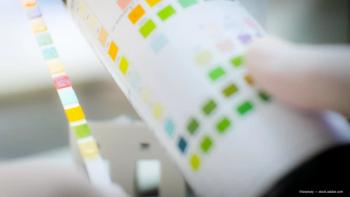
Meeting highlights from the AAO annual congress 2006, Las Vegas, 11-14 November
More prospective studies are needed to evaluate the role of diurnal and long-term intraocular pressure (IOP) function in glaucoma development and progression, according to Felipe A. Medeiros, MD, PhD, assistant professor of ophthalmology, University of California at San Diego, USA, speaking at the glaucoma subspecialty session.
Evaluating the risk and progression of glaucoma: it's easier said than done
More prospective studies are needed to evaluate the role of diurnal and long-term intraocular pressure (IOP) function in glaucoma development and progression, according to Felipe A. Medeiros, MD, PhD, assistant professor of ophthalmology, University of California at San Diego, USA, speaking at the glaucoma subspecialty session.
While the 2002 Ocular Hypertension Treatment Study (OHTS) showed that each 1 mmHg increase in IOP was associated with a 10% increase in the risk of glaucoma development, it did not explore the effects of IOP fluctuation on risk. However, a 2004 report on the Advanced Glaucoma Intervention Study showed that each 1 mmHg increase in long-term IOP fluctuation increased the odds of progression by 30%.
He also cautioned against judging progression based on one test result showing a change, since the patient or technician may be having an off day that influences the outcome. Several retests will yield more accurate information about the likelihood of progression.
Optic disc photography is considered the gold standard for detecting glaucomatous change, but it has limitations such as slowness, subtlety, the need for many confirmatory tests and the need for expensive trials with large cohorts to provide validation, said David S. Greenfield, MD, professor of ophthalmology at the Bascom Palmer Eye Institute of the Palm Beaches, USA.
An expanding body of evidence shows that imaging devices also may be able to detect change and that some machines are more sensitive than expert observers looking at optic disc photographs, Dr Greenfield said. However, change detection strategies require prospective validation and statistical units of change probability are essential to differentiate test/retest repeatability from true biological change. In addition, the technologies with the highest discriminating power for diagnosing glaucoma may not necessarily be superior at detecting change.
Debating the importance of blue light filtering
"The question is no longer whether to use a blue-light-filtering IOL, but which one to use," said Dr McCulley, professor and chairman of ophthalmology, University of Texas Southwestern Medical Center, USA. "There are now a number of blue light filtering IOLs on the market worldwide and more to be released and we will see all sorts of variations and permutations as the market develops."
However, in a follow-up presentation, Randall J. Olson, MD, concluded that further study is needed regarding various potential adverse effects of blue light filtering implants. Dr Olson is professor and chairman of ophthalmology, John A. Moran Eye Center, University of Utah, Salt Lake City, USA. He told attendees that the Age-Related Eye Disease Study (AREDS) has provided strong evidence that blue blocking is not clinically important.
Dr McCulley presented evidence from the peer-reviewed literature that he believes has sufficiently addressed the concerns about blue light filtering IOLs that were raised when the technology debuted. Those studies demonstrated blue light filtering IOLs do not significantly affect colour or night vision nor interfere with glaucoma testing. On the other hand, there is evidence the blue light filtering implant can improve contrast sensitivity and colour perception in some populations.
More recently, questions have emerged about adverse effects on circadian functioning. However, Dr McCulley said blue light filtering IOLs allow sufficient light transmission for melanopsin regulation that controls melatonin release and they more closely mimic the normal condition that the human eye has evolved to over billions of years compared with a violet filtering IOL.
Newsletter
Get the essential updates shaping the future of pharma manufacturing and compliance—subscribe today to Pharmaceutical Technology and never miss a breakthrough.













































